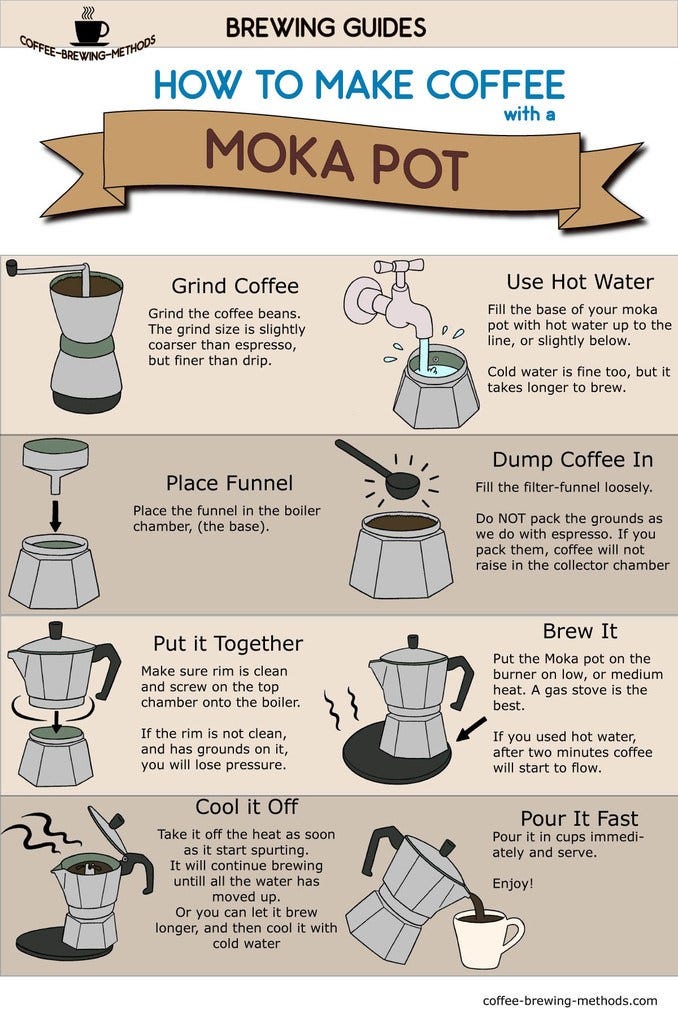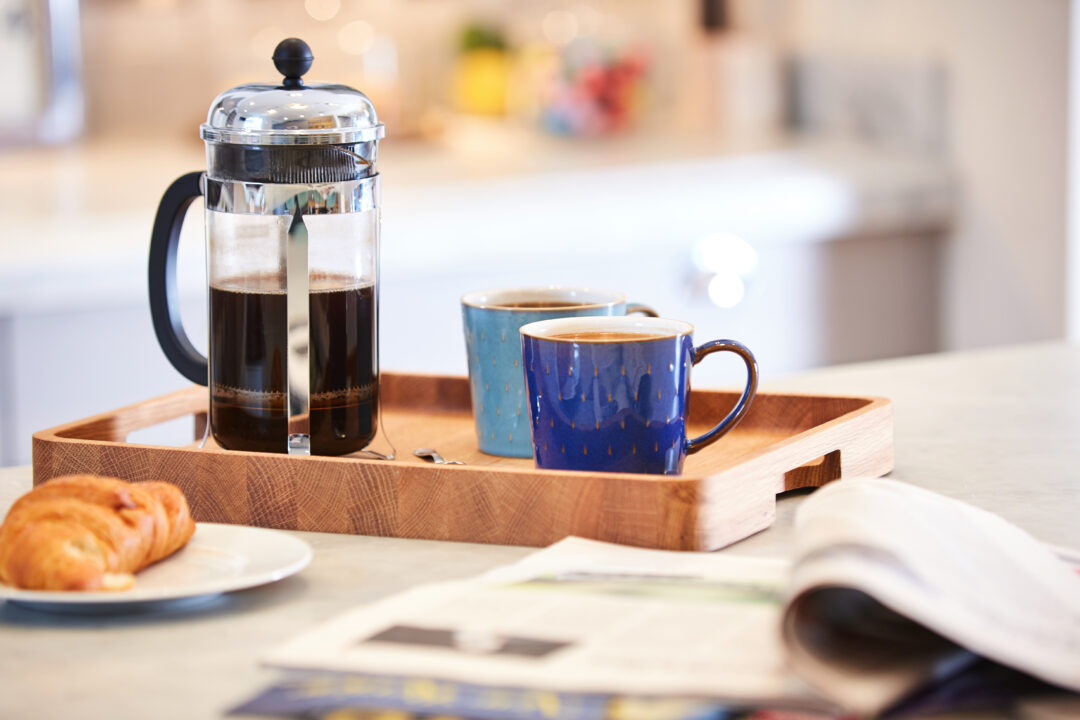Coffee Brewing Methods Demystified: From French Press to Cold Brew
Coffee Brewing Methods Demystified: From French Press to Cold Brew
Blog Article
The Scientific Research Behind Coffee Developing: Exactly How Temperature Level and Time Affect Your Beverage
Comprehending the science behind coffee brewing discloses that temperature level and time are not simple variables yet essential aspects that determine the drink's flavor profile and total top quality. The optimal brewing temperature typically falls in between 195 ° F and 205 ° F, while the duration of removal differs significantly throughout different approaches. This interaction of factors can lead to a cup that is either delightful or unsatisfactory. As we discover the nuances of these aspects, the question occurs: just how can one successfully equilibrium temperature and time to accomplish that ideal brew?
The Chemistry of Coffee Extraction
The chemistry of coffee removal explores the detailed procedures that transform raw coffee beans right into the aromatic beverage taken pleasure in worldwide. This transformation mainly includes the solubility of various substances existing in the beans, which are affected by aspects such as work dimension, water quality, and the brewing technique utilized.
Throughout the developing procedure, warm water functions as a solvent, extracting soluble substances, consisting of caffeine, sugars, lipids, and acids, from the coffee premises. Each compound contributes to the taste profile, fragrance, and body of the last beverage. Acids are liable for tasty and bright notes, while oils add to an abundant mouthfeel.
The first phases of developing extract acids and sugars, leading to a pleasurable level of acidity, while extended removal can lead to anger due to over-extraction of unwanted compounds. Understanding these chemical communications is critical for maximizing developing techniques, as the balance between extraction time and water temperature can considerably influence the overall top quality of the coffee.
Ideal Developing Temperatures
Discovering the appropriate developing temperature level is vital for opening the full capacity of coffee tastes and aromas - coffee brewing methods. Research study shows that the optimal variety for developing coffee exists in between 195 ° F to 205 ° F(90 ° C to 96 ° C) Within this variety, the removal procedure successfully dissolves the desirable soluble compounds in coffee beans, causing a delicious and balanced mug
Brewing at reduced temperatures, such as listed below 195 ° F(90 ° C ), might cause under-extraction, yielding a weak and acidic mixture with soft tastes. Conversely, developing at temperatures going beyond 205 ° F(96 ° C) can result in over-extraction, creating a extreme and bitter taste because of the extreme dissolution of unfavorable compounds, such as tannins.
Additionally, the optimal brewing temperature level can differ relying on the coffee bean kind and roast degree. For instance, lighter roasts typically gain from a little greater temperatures to boost their complicated taste accounts, while darker roasts might be better suited to lower temperatures to minimize bitterness.
Ultimately, preserving precision in brewing temperature levels is critical for attaining a harmonious balance of flavors, guaranteeing that every mug of coffee delivers an enjoyable sensory experience.
Effect of Developing Time
Brewing time plays an essential function in determining the taste account and general top quality of coffee. The removal procedure, which influences the taste, fragrance, and body of the beverage, is mainly depending on the length of time the coffee grounds are in contact with water. Shorter developing times can cause under-extraction, leading to a sour or weak flavor, as not sufficient soluble compounds are dissolved. On the other hand, extended developing can bring about over-extraction, where undesirable compounds are released, leading to a bitter or astringent taste.
Ideal developing time varies relying on the approach made use of and the work size of the coffee. For instance, a French press normally needs about 4 mins, while espresso removal is typically completed within 25 to 30 seconds. It is necessary to calibrate brewing time in combination with other variables, such as water temperature and coffee-to-water ratio, to achieve the wanted taste account.
Comprehending the influence of developing time makes it possible for coffee lovers to improve their developing methods, inevitably enhancing the sensory experience of their mug (coffee brewing methods). With cautious focus to this variable, one can unlock the full possibility of the coffee, revealing its special qualities and subtleties
Developing Methods and Their Effects

For example, approaches like French press and cool mixture permit for a longer steeping time, causing a fuller body and durable flavor because of increased removal of oils and soluble solids. Conversely, coffee brewing utilizes high pressure and a shorter extraction time, generating a concentrated shot that emphasizes extreme flavors and an abundant crema.
Pour-over techniques, such as Chemex or V60, supply a more controlled extraction procedure, enabling the brewer to manipulate flow price and water circulation, which can boost brightness and quality. Percolation methods cycle water with the coffee premises visit site multiple times, leading to a more powerful, usually bitter taste.
Last but not least, using paper filters versus metal filters can also affect the final taste; paper filters generally generate a cleaner mug by capturing oils and great fragments, while steel filters enable more oils to go through, contributing to a fuller mouthfeel - coffee brewing methods. Comprehending these nuances can elevate the coffee experience dramatically
Tips for Improving Your Brew
A well-executed brew can change even the most basic coffee into an exceptional experience. To attain this, interest to information is vital. Begin with high-quality, freshly roasted beans, as their flavor account decreases in time. Grind the beans right before making to take full advantage of quality, making sure the grind dimension matches your developing method-- coarser for French press and finer for coffee.
Water quality plays a vital function; use filtered water complimentary from contaminations. The perfect brewing temperature level varies in between 195 ° F and 205 ° F(90 ° C to 96 ° C ) Too warm can scorch the coffee, while as well amazing might under-extract flavors.
Timing is similarly crucial. For immersion techniques, steeping for three to five minutes is ideal, whereas drip techniques normally take around five mins. Experiment with mixture times to discover your preferred strength.

Conclusion
In summary, the complex partnership between temperature and time is extremely important in the coffee developing procedure. Abiding by optimum developing temperatures in between 195 ° F and 205 ° F, together with accurate timing customized per method, guarantees the preferred flavor account is accomplished. Recognizing these clinical concepts empowers people to improve their brewing methods, inevitably causing a more well balanced and enjoyable coffee experience. Mastery of these variables is necessary for any kind of coffee lover looking for excellence in their beverage.
Understanding the science try this site behind coffee brewing reveals that temperature and time are not simple variables yet crucial elements that dictate the beverage's taste profile and general top quality. Understanding these chemical communications you can find out more is crucial for maximizing brewing techniques, as the balance in between extraction time and water temperature level can significantly influence the total high quality of the coffee.Developing time plays a critical role in figuring out the taste profile and overall quality of coffee. By concentrating on these aspects-- bean high quality, grind size, water temperature level, soaking time, and ratio-- you can boost your coffee developing process, resulting in a constantly remarkable cup.
In summary, the detailed connection in between temperature and time is paramount in the coffee developing procedure.
Report this page